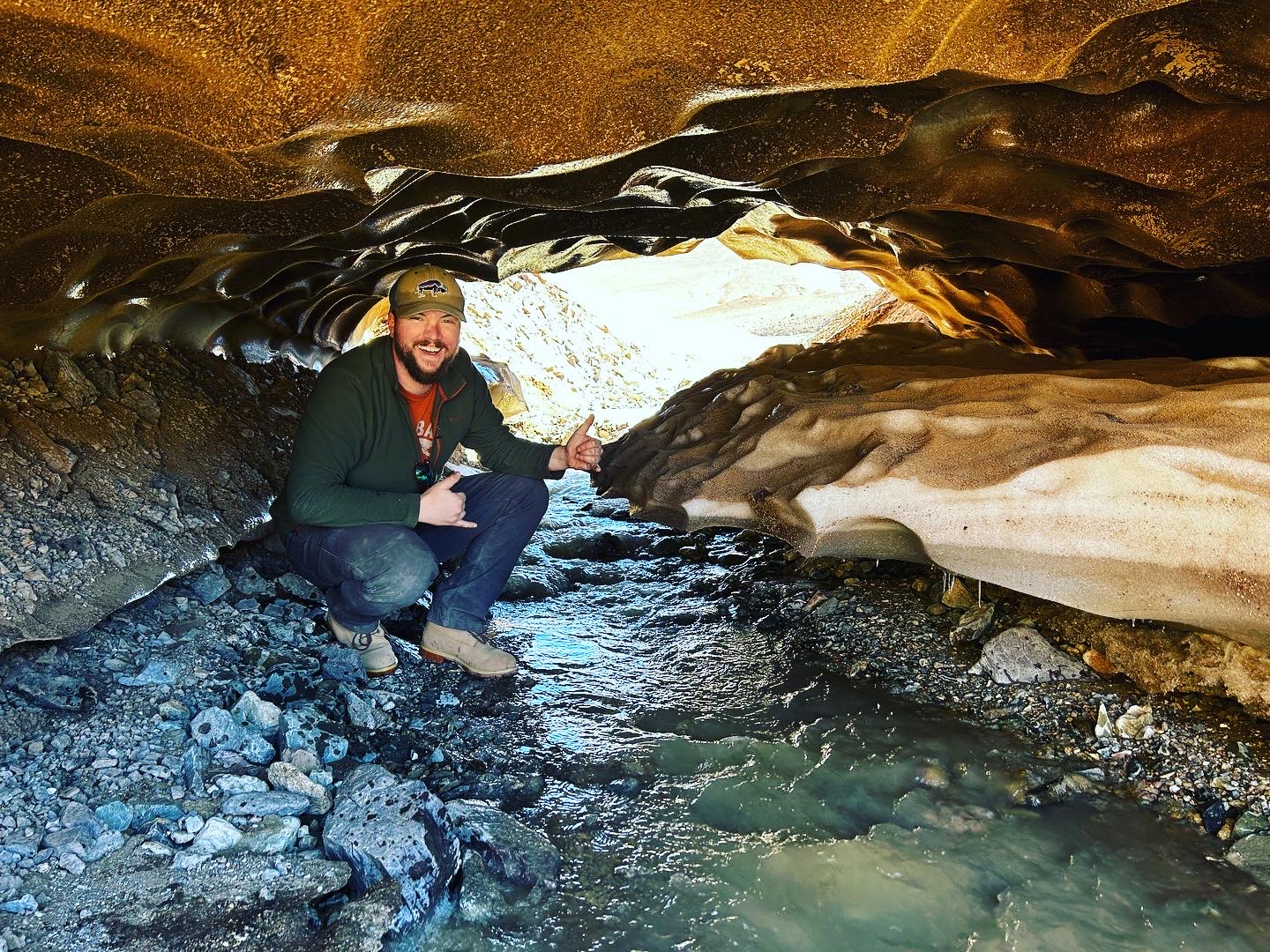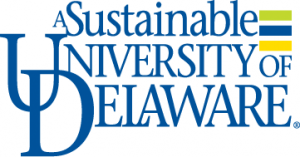Delaware Environmental Institute

Michael Powers, New DENIN Fellow, Is Building a Model of Permafrost Distribution in the Central Andes Mountains to Allow Coexistence of Drinking Water Reserves and Mining
About half of the world’s copper is mined in the high Andes Mountains of South America. Dissertation research by newly named DENIN Fellow Michael Powers will help balance concern for preserving the region’s permafrost and rock glaciers as drinking water reserves with more environmentally friendly copper mining.
The prestigious DENIN Fellowships offer financial support and professional development opportunities to UD doctoral students whose scientific research and interests demonstrate a clear link to societal needs and benefits.
Using satellite data and field measurements, Powers is mapping the occurrence of permafrost in the Andes. The area contains cultural heritage sites of indigenous people, and several new copper mines are proposed in the area.
Copper is critical in emerging technologies such as electric cars that may help us slow climate change. “If we’re going to invest in the electrification of our current infrastructure, if we want more electric vehicles, we need an upgraded electric grid,” Powers said, “and we’re going to get the copper from somewhere.”
Mining in the region is done through mountain-top removal, which discards the ore’s overburden—the waste rock and soil—in the surrounding valleys. This disposal can interrupt meltwater flow from rock glaciers.
“Chile and Argentina both have robust laws protecting glacial water and glaciers,” Powers said, “and they lump rock glaciers and permafrost sources into that designation.” The mining companies want the ore, but they can’t disturb the glaciers because population centers such as Santiago, Chile, and Mendoza, Argentina, depend on rock glaciers and permafrost as strategic drinking water reserves.
“Knowing where these areas of permafrost are can help us to designate them for protection, while also allowing for continued development to build future economies,” Powers said. “This is the most likely source for copper in the world, but we have to juggle the need to protect the water reserves for people in this part of the world.”
His advisor, Michael O’Neal, professor of geological sciences, has been working in the Andes for about a decade. This is what attracted Powers to work with him.
Powers is mapping permafrost using remote sensing satellites and known spatial parameters such as elevation, aspect, and slope. He spent about two weeks in the area this spring, burying temperature sensors that record every half hour and installing devices to track the motion and velocity of rock glaciers. He’s trying to combine all these data points into a model that can predict where permafrost will occur in this alpine environment, so that the mining companies avoid digging there or disposing of waste in those areas. The Andes are a perfect place for this modeling because there is little vegetation given the arid conditions.
Powers’s model will integrate much of the data that previous graduate students have gathered from the area to define not just short-term, seasonal variations, but also decadal variability in ground temperature and geomorphology. His work will identify gaps in the data temporally and spatially and attempt to fill some of those gaps.
In the Andes, he will ground-truth his model of permafrost distribution by digging to ensure that the permafrost occurs where the model predicts it will. This will strengthen the precision and accuracy of the model.
He’s eager to get back to the Andes next year.
“I’ve always been a mountain guy,” Powers said. “I’ve hiked and mountain biked most of my life,” often in Michaux State Forest in southcentral Pennsylvania, near his home.
Up on a mountain, he says, “it feels like you’re still in an age of exploration. Whenever you’re the only person on an entire mountainside, it feels vast and unknown.”
Powers earned a bachelor’s degree in geoenvironmental studies from Shippensburg University in Pennsylvania. As an undergraduate, he researched the coastal geomorphology of Delaware.
He played tuba in the college marching band, then served as drum major for 3 years, corralling about 170 people during practices and conducting the band.
After undergrad he worked as an environmental consultant for a few years doing environmental site assessments, oil spill cleanups, and groundwater production projects. This experience got him thinking about “just how effective we are at managing our water reserves and the balancing act that we have to play each day”—similar to the balancing act of preserving drinking water supplies while allowing copper mining in the Andes.
When he finishes his doctoral degree in a few years, he hopes to work for a research agency such as NASA using satellite data to create models that monitor changes in our landscape.
Powers said that his research area in the Andes resembles the surface of Mars, which was formed from similar geologic processes. We know there is permafrost on Mars, and he’d love to try to apply his model of permafrost distribution to Mars using remote sensing data. This might build knowledge about where to find underground water on Mars.
He and his fiancé will visit Iceland on their honeymoon next year. He’s looking forward to standing between the North American and Eurasian tectonic plates there; seeing glaciers, black sand beaches, and the northern lights; and eating lots of fish.
by Joy Drohan, Eco-Write, LLC
Photo: Michael Powers; Credit: Michael O’Neal


